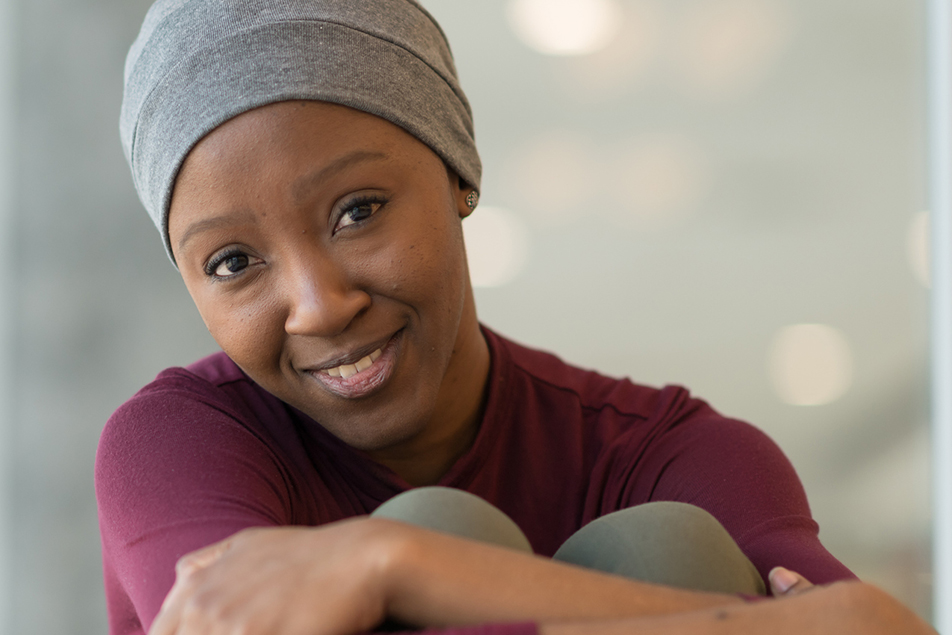
You’ll find that cancer and its treatments are often characterized as a battle or war, but truly it’s a journey, sprinkled with pitfalls and victories along the way. Patients must walk an unyielding, arduous path that most feel the effects of even after ringing that resounding bell of remission. Hair loss, or Chemotherapy-induced Alopecia (CIA), is just one of the distressing side effects of treatment. In this post, the team at the Parkview Packnett Family Cancer Institute shares a general timeline of what patients can expect, along with helpful coping strategies.
Why does hair loss or CIA occur?
The medications utilized in chemotherapy treatment are designed to target and attack rapidly dividing cells. Unfortunately, there is no way of distinguishing between cancerous cells and healthy cells, including hair follicles. Plus, at any given time, 90% of your hair is in the rapid growth stage, making it an unfortunate bystander in the treatment process.
What should you expect?
Chemotherapy may result in hair loss over your entire body, not just your scalp. Your eyelashes, eyebrows, armpits and pubic area may also be affected. The level and occurrence of hair loss, or CIA, hinges on several variables, including the type of cancer you have, the specific medications utilized and the dosing or schedule of your treatments.
CIA can be sudden or gradual, causing anything from thinning to complete baldness. The degree of change is dependent upon the medications and dosage of your treatment. It is not uncommon for hair to fall out in clumps or patches and for patients to experience varying levels of scalp discomfort. Many people notice the sides and back of their hair diminishing first, primarily because those areas receive more friction, followed by the crown.
How can you manage CIA?
While there is no way to prevent or control CIA, there are steps you can take throughout your treatment to minimize any stress, frustration and anxiety that is associated with your hair loss.
- First and foremost, be gentle. Your hair will be in a fragile state, give it a little extra love and care, both before and after your treatment. Avoid perms, colors or dyes, bleach, and any form of heated hair appliances. These can wreak havoc on your hair and contribute to scalp sensitivity.
- Take the plunge. Before, or as you start to notice the transition, consider cutting your hair. Many people choose to cut straight to the point (no pun intended) and shave their heads. Since a loss of any degree is inevitable, shaving is one option for patients who want to feel in control while alleviating the stress of simply watching it fall out. At PCI, stylists are available to assist should a patient opt to shave their head. Appointments can be made by speaking with your nurse navigator.
- Plan, Prepare and Patience. As a former breast cancer patient, Danette Fitzgerald, vice president, Marketing and Community Relations, Parkview Health, will tell you, “My hair loss experience wasn’t as devastating as I thought it would be, mainly because I had a plan and I knew my timeline. It wasn’t as emotional for me, in large part and thanks to, my specialized care team and nurse navigator, who’s been with me throughout my entire treatment.”
Just as Danette thought about what she wanted for her impending hair loss, you too must think about what you’ll want and need as you progress through your journey. Begin by protecting your scalp; hats, scarves, wraps, and wigs are all good choices.
If you are interested in a wig, the best time to be fitted for one is before you lose your hair. The stylist will want to see your normal tresses and discuss your preferences, to better meet your needs and expectations. Remember to check with your carrier or provider, as most insurance will pay for your wig. If you do not have insurance or aren’t sure where to go, there are community resources that provide free wigs and head attire to patients with CIA. Chances are you may employ one or all of these throughout your journey, but we encourage you to speak with your physician or nurse navigator with any questions or concerns.
When will your hair grow back?
Fortunately, most hair loss from chemotherapy is temporary. Many patients experience an initial thinning or loss within 1-3 weeks of their initial treatment or dose of chemotherapy and by month three the hair loss is often complete.
Regrowth can occur before treatment has ended or it could take several weeks after the final dose for your hair to recover and begin to grow again. When your hair starts to grow back, it could be different in color, shade, thickness and texture from the hair you lost. The following regrowth timeline is a general indication of what most people can expect after chemotherapy:
2-3 weeks: Very fine, soft hair forms
1-2 months: Thicker hair begins growing
2-3 months: An inch of hair may have grown
3-6 months: Some 2–3 inches of hair may have grown, covering bald patches
12 months: The hair may have grown 4–6 inches
Can hair loss be prevented?
No. Currently, there aren’t any treatments available that guarantee zero hair loss during chemotherapy treatments. At Parkview Cancer Institute, however, some eligible patients, depending on their treatment protocol, may choose to utilize cooling caps. It is a system that cools the scalp thus decreasing the activity of the hair follicles, which in turn slows down cell division, in theory making the follicles less affected by the chemotherapy treatment.
The effectiveness of the cooling cap is dependent on the drug regimen of each patient. Results will vary from person to person. If you are interested in learning more about cooling caps, their cost and efficacy, talk to a member of your care team to see if you are a candidate.
As you walk this unexpected and unfamiliar path, whether you are the patient or a loved one, remember it’s a journey that will require a support system. Danette advises that the easiest thing anyone can do during treatment is, “Let people help you.” Most importantly, remember that CIA will happen when it happens, and it is temporary.
The Parkview Foundation established the Transformative Cancer Care Fund to assist cancer patients with care not traditionally covered by health insurance. For instance, the fund allows Parkview Packnett Family Cancer Institute to provide genetic counseling, nutritional supplements, survivorship programs and wigs for cancer patients who lose their hair during treatment. If you would like to help support this fund, you can donate now by using this link.



